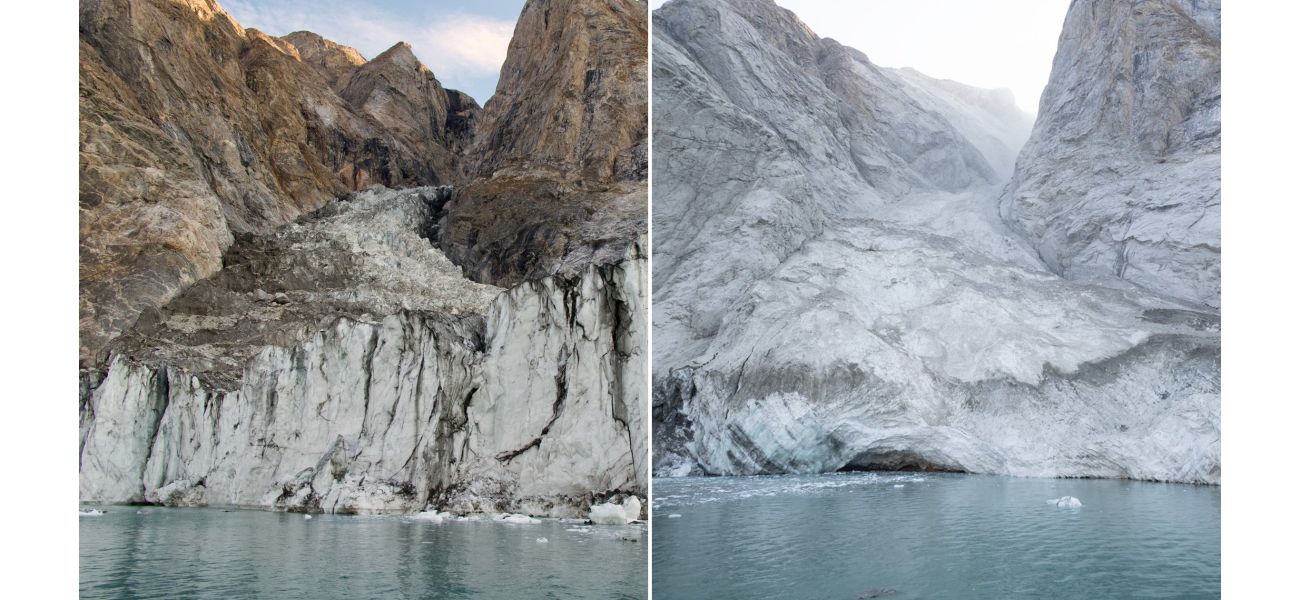The puzzling vibration of the Earth for nine days has finally been explained.
Scientists were baffled by the unexpected seismic activity.
September 13th 2024.

A year ago, a mysterious event caught the attention of experts around the world. Seismometers were picking up vibrations that lasted for nine days, something that had never been recorded before. Scientists were baffled by this seismic wave that traveled such a great distance with only one frequency. But after months of research, the cause of these vibrations has finally been revealed.
It turns out that a massive tsunami, triggered by a landslide in Greenland, was responsible for the strange vibrations. This landslide was a result of climate change and occurred in the remote Dickson Fjord. The researchers, including a team from UCL, conducted a study and discovered that a 1.2km-high mountain had collapsed into the fjord. The force of the landslide caused a huge wave, reaching up to 110 metres in height and extending 10km across the fjord.
The massive wave quickly reduced in size, but the water continued to slosh back and forth for nine days. The researchers were able to recreate the angle of the landslide and the unique shape of the fjord using a mathematical model. They found that the water would have moved back and forth every 90 seconds, which perfectly matched the recorded vibrations in the Earth's crust.
According to the study, published in the journal Science, the landslide was a result of climate change. The researchers believe that the glacier at the base of the mountain had thinned, causing the rock-face above it to become unstable. This demonstrates the complex interconnectedness of different systems on Earth, from the atmosphere to the cryosphere to the hydrosphere and the lithosphere.
Co-author Dr. Stephen Hicks of UCL Earth Sciences expressed his initial confusion upon seeing the seismic signal. He explained that this event is the first time that water sloshing has been recorded as vibrations through the Earth's crust, traveling all over the world and lasting for several days. The international team estimated that 25 million cubic metres of rock and ice fell into the fjord during the landslide, creating one of the largest tsunamis in recent history.
In conclusion, this event serves as a stark reminder of the impacts of climate change and how it can trigger unexpected and far-reaching consequences. The researchers hope that their findings will contribute to a better understanding of these complex systems and aid in future disaster prevention efforts.
It turns out that a massive tsunami, triggered by a landslide in Greenland, was responsible for the strange vibrations. This landslide was a result of climate change and occurred in the remote Dickson Fjord. The researchers, including a team from UCL, conducted a study and discovered that a 1.2km-high mountain had collapsed into the fjord. The force of the landslide caused a huge wave, reaching up to 110 metres in height and extending 10km across the fjord.
The massive wave quickly reduced in size, but the water continued to slosh back and forth for nine days. The researchers were able to recreate the angle of the landslide and the unique shape of the fjord using a mathematical model. They found that the water would have moved back and forth every 90 seconds, which perfectly matched the recorded vibrations in the Earth's crust.
According to the study, published in the journal Science, the landslide was a result of climate change. The researchers believe that the glacier at the base of the mountain had thinned, causing the rock-face above it to become unstable. This demonstrates the complex interconnectedness of different systems on Earth, from the atmosphere to the cryosphere to the hydrosphere and the lithosphere.
Co-author Dr. Stephen Hicks of UCL Earth Sciences expressed his initial confusion upon seeing the seismic signal. He explained that this event is the first time that water sloshing has been recorded as vibrations through the Earth's crust, traveling all over the world and lasting for several days. The international team estimated that 25 million cubic metres of rock and ice fell into the fjord during the landslide, creating one of the largest tsunamis in recent history.
In conclusion, this event serves as a stark reminder of the impacts of climate change and how it can trigger unexpected and far-reaching consequences. The researchers hope that their findings will contribute to a better understanding of these complex systems and aid in future disaster prevention efforts.
[This article has been trending online recently and has been generated with AI. Your feed is customized.]
[Generative AI is experimental.]
0
0
Submit Comment





